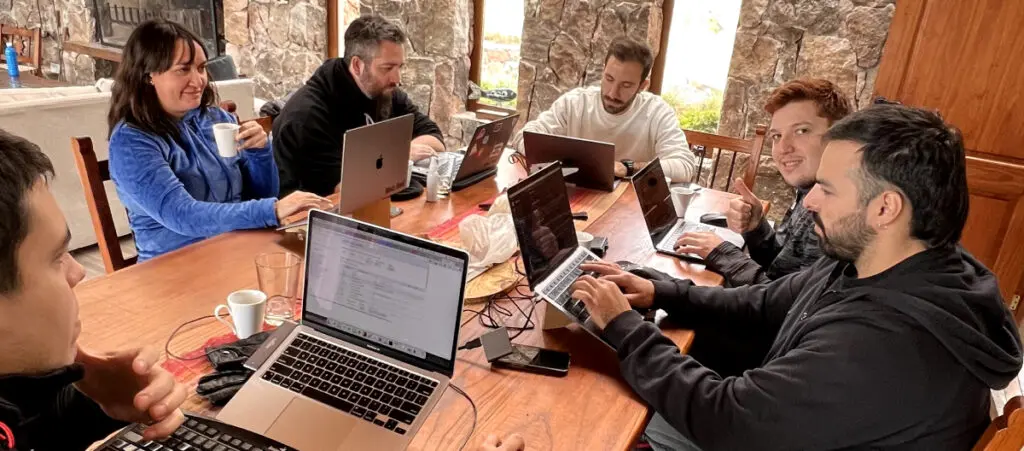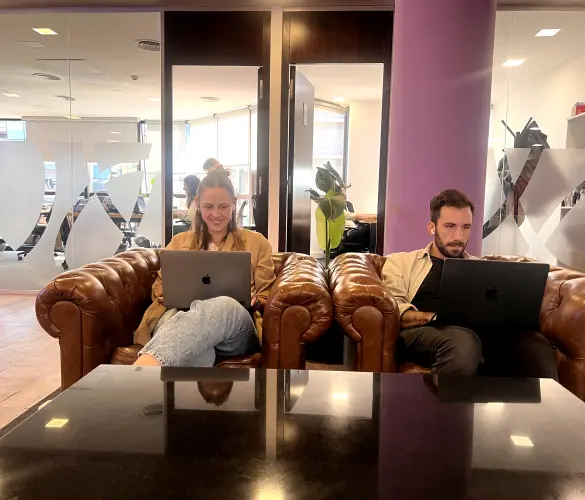En cualquier proyecto complejo de desarrollo en WordPress, la comunicación clara y consistente a menudo puede ser el factor decisivo entre el éxito y la frustración.
Cualquiera que tenga experiencia en grandes proyectos de WordPress que involucren a múltiples miembros del equipo con diferentes habilidades y funciones sabe lo fácil que es que los malentendidos los descarrilen. Es por eso que es importante saber cómo prevenirlos.
Recientemente, mi equipo experimentó malentendidos de primera mano, y las lecciones aprendidas transformaron cómo colaboramos entre equipos. Este artículo explicará lo que pasamos y cómo lo resolvimos.
Esperamos que esto contribuya a ayudar a tu equipo a superar cualquier desafío de comunicación que enfrenten.
Desafíos de Comunicación en Proyectos Complejos de Desarrollo en WordPress
En nuestro proyecto, estaban involucrados múltiples equipos, cada uno con sus propias prioridades: los diseñadores se centraban en la estética, los desarrolladores trabajaban en la funcionalidad, y el equipo de QA aseguraba que todo cumpliera con las especificaciones necesarias.
Es natural que cada grupo aborde el proyecto desde una perspectiva diferente, ya que cada miembro proviene de un trasfondo distinto y utiliza técnicas diferentes para lograr sus objetivos. Sin embargo, cuando esas perspectivas no se alinean, también pueden llevar a malentendidos.
En este contexto, nos enfrentamos a un desafío recurrente: cómo se compartía la información—o más bien, cómo no se hacía.
Hubo momentos en que las actualizaciones de los encuentros diarios no llegaban a Asana, nuestra herramienta de gestión de tareas. Por ejemplo, podríamos discutir un cambio de diseño en una reunión, pero porque el diseñador estaba ocupado, el archivo correspondiente de Figma no se actualizaba de inmediato. Como resultado, Asana también quedaba desactualizado.
¿El resultado? Los desarrolladores realizaban los cambios acordados durante la reunión. Sin embargo, ya que este cambio nunca fue documentado, cuando el equipo de QA revisaba la tarea después, no encontraban el contexto necesario, lo que llevaba a confusión y un ida y vuelta innecesario.
Cómo Abordamos Estos Desafíos
Para corregir esto, necesitamos reforzar nuestra comunicación entre equipos. Primero, nos aseguramos de que cada reunión, sin importar cuán pequeña, tuviera sus puntos clave documentados en Asana. Esto garantizó que todos, especialmente el equipo de QA, tuvieran el contexto necesario para revisar las tareas.
También nos enfocamos en abrir canales de comunicación, confiando más en herramientas como Slack para aclaraciones rápidas y organizando reuniones espontáneas por video cuando era necesario.
Pero más allá de las herramientas, el mayor cambio vino de fomentar una cultura donde hacer preguntas no solo era aceptable sino alentado. Personalmente, me hice el hábito de hacer más preguntas, incluso si pensaba que sabía la respuesta.
El objetivo era eliminar cualquier ambigüedad desde el principio, en lugar de tratar de adivinar cuáles podrían ser los requisitos.
Los Resultados: Un Equipo Más Eficiente y Motivado
Los resultados fueron inmediatos.
Antes de mejorar nuestra comunicación, muchas tareas se prolongaban a lo largo de múltiples sprints, a veces quedaban abiertas durante dos o tres sprints sin cierre. Una vez que hicimos estos cambios, las tareas se completaron más rápidamente y nuestros sprints se cerraron a tiempo.
Mejorar la comunicación también tuvo un impacto significativo en la moral del equipo. Todos nos sentíamos frustrados por la incapacidad de cerrar tareas, pero a medida que mejoraron las cosas, esa frustración se fue disipando, y recuperamos un sentido de progreso.
Avanzando con una Comunicación Mejorada
Una de las mayores lecciones que he aprendido de esta experiencia es la importancia de la empatía. Hacer un esfuerzo por entender los diferentes desafíos y prioridades de cada equipo ayudó a fomentar una mentalidad más colaborativa.
También aprendí que la escucha activa y la resolución de problemas proactiva son clave para prevenir problemas antes de que surjan.
Avanzando, estamos trabajando en estandarizar estas prácticas para que cada proyecto se beneficie de un proceso de comunicación más fluido. Nuestro equipo también está planeando organizar talleres sobre habilidades de comunicación para asegurar que sigamos creciendo en esta área.
En conclusión, mejorar la comunicación entre los diversos equipos que hacen posibles los proyectos de WordPress ayuda a mantener todo en orden y fomenta un sentido de unidad y propósito compartido. Con una mejor colaboración, no solo cumplimos con los plazos, sino que también construimos equipos más fuertes y eficientes al mismo tiempo.
Si encontraste útil este artículo, leé nuestro blog y recursos para desarrolladores para más ideas y guías!

